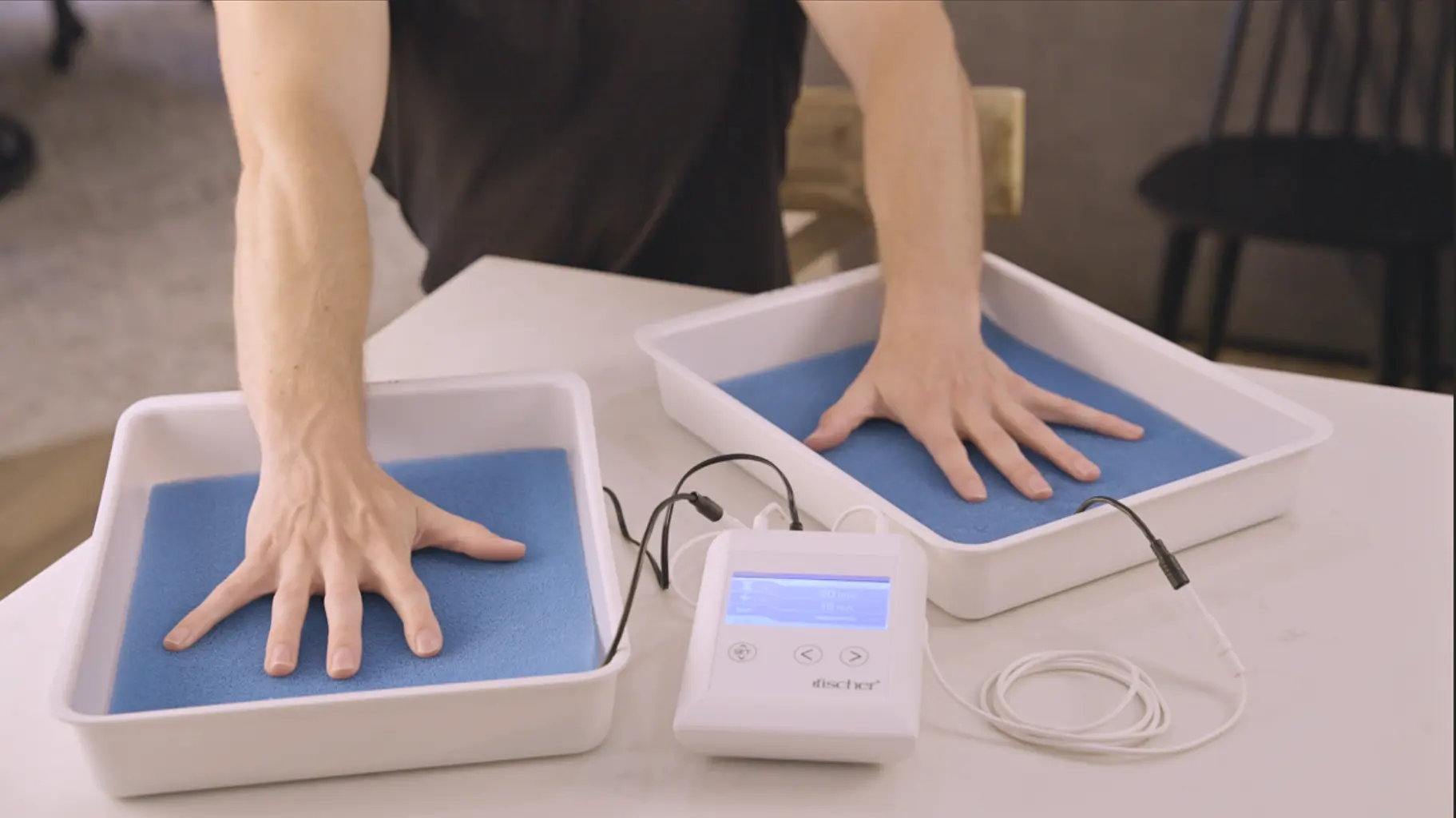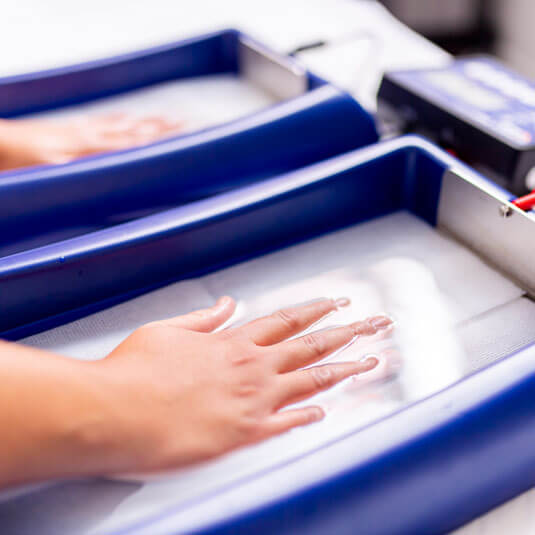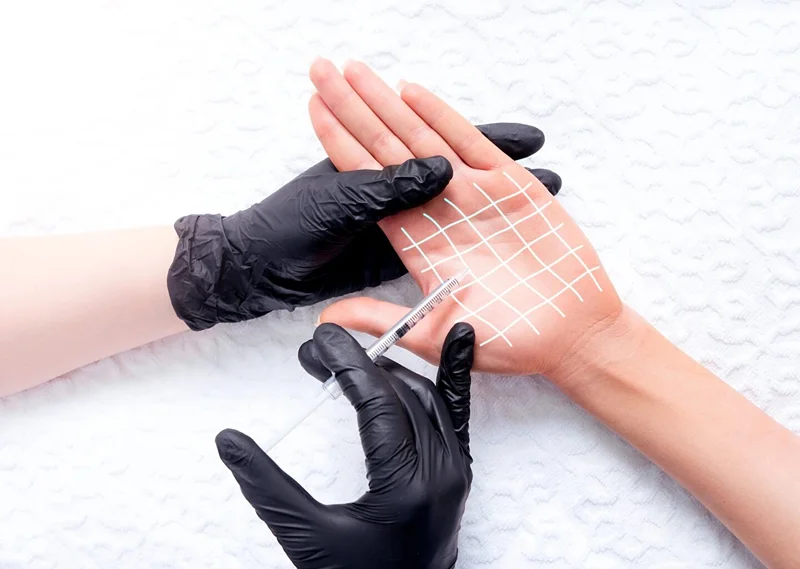Unveiling the Intricacies of Excessive Sweating: A Comprehensive Overview to Medical Diagnosis and Administration
Excessive sweating, medically called hyperhidrosis, is a condition that influences a considerable variety of individuals and can have an extensive effect on their lifestyle. While sweating is a natural bodily feature, its overactivity in hyperhidrosis provides a distinct collection of difficulties that often go past simple pain. Understanding the underlying reasons, identifying the signs, and browsing the analysis process for hyperhidrosis can be detailed tasks. In this comprehensive guide, we will discover the complexities of hyperhidrosis, from its medical diagnosis to the variety of therapy choices readily available, clarifying reliable monitoring approaches for those facing this problem.

Understanding Hyperhidrosis Causes
Hyperhidrosis causes can be associated to numerous factors such as genes, hormone imbalances, and specific clinical conditions. Genetics play a significant duty in main focal hyperhidrosis, where individuals inherit the condition from their family participants. By determining the certain variables adding to excessive sweating, healthcare service providers can tailor therapy strategies to deal with the underlying cause, supplying alleviation and improving the high quality of life for people influenced by hyperhidrosis.
Recognizing Hyperhidrosis Symptoms

Moreover, hyperhidrosis signs and symptoms may manifest in social and emotional distress, as people might feel embarrassed or distressed regarding their sweating, resulting in evasion of social situations (Treatment for hyperhydrosis of hands and feet). Additionally, repeated episodes of excessive sweating can result in skin maceration, fungal infections, and a total reduction in self-confidence
Diagnostic Process for Hyperhidrosis
Initiating the diagnostic procedure for too much sweating entails complete evaluation of the individual's clinical history and health examination. Asking regarding the start, duration, and sets off of sweating episodes is crucial to set apart in between main focal hyperhidrosis and additional generalised hyperhidrosis. Case history ought to also consist of questions concerning medicines, medical problems, and family members background of hyperhidrosis.
During the checkup, certain interest is paid to the areas influenced by sweating. The medical care company might examine the degree of sweating, check for indicators of underlying conditions, and evaluate the impact of sweating on the person's high quality of life. Furthermore, specific examinations like the gravimetric test, starch-iodine click here to find out more test, or skin conductance dimensions might be carried out to measure the amount of sweat produced.
Furthermore, in situations where second hyperhidrosis is suspected, additional examinations such as blood examinations, pee tests, and imaging research studies may be advised to determine the underlying cause of too much sweating. The diagnostic procedure intends to accurately figure out the type and reason for hyperhidrosis to direct appropriate management techniques.
Treatment Alternatives for Hyperhidrosis
When attending to too much sweating, various treatment alternatives are offered to reduce signs and improve the individual's top quality of life. The treatment method for hyperhidrosis depends on the extent of symptoms and the person's reaction to first therapies.
Topical treatments, such as aluminum-based antiperspirants, are usually suggested as the initial line of defense for managing light cases of hyperhidrosis. For people with extra severe signs, dental medicines like anticholinergics may be suggested to aid decrease sweating.

Effective Administration Methods
To efficiently manage hyperhidrosis, a individualized and thorough therapy plan customized to the client's details needs and response to previous therapies is essential. This plan may include a mix of restorative methods, consisting of lifestyle modifications, topical treatments, dental drugs, botulinum toxic substance injections, iontophoresis, and in extreme cases, surgical treatments like sweat gland removal or sympathectomy. Way of life modifications such as wearing moisture-wicking clothes, using antiperspirants, and practicing stress-reducing strategies can complement medical interventions. Topical antiperspirants consisting of light weight aluminum chloride are commonly the first-line therapy, with stronger formulations readily available for immune instances. Oral medicines like anticholinergics might be recommended for generalised hyperhidrosis. Botulinum toxic substance shots work for focal hyperhidrosis, offering short-term relief by obstructing the launch of acetylcholine. Iontophoresis, including the use of a reduced electrical present to decrease gland activity, can be beneficial for both palmoplantar and axillary hyperhidrosis. Surgical options are typically scheduled for severe, refractory cases and call for cautious consideration of benefits and threats. A multidisciplinary technique including dermatologists, health care medical professionals, and, if necessary, surgeons, can optimize the management of hyperhidrosis.
Final Thought
To conclude, hyperhidrosis is a our website problem identified by extreme sweating, which can significantly affect an individual's lifestyle. By comprehending the causes, recognizing the signs, and going through the analysis procedure, medical care suppliers can successfully manage this here problem. Therapy options consist of topical drugs, dental medicines, shots, and also procedures in severe instances. With correct medical diagnosis and administration approaches, people dealing with hyperhidrosis can find alleviation and enhance their general wellness.
Excessive sweating, clinically known as hyperhidrosis, is a problem that influences a significant number of individuals and can have a profound impact on their top quality of life. By determining the certain elements contributing to extreme sweating, healthcare companies can customize treatment plans to resolve the underlying cause, offering relief and enhancing the quality of life for people affected by hyperhidrosis.
Hyperhidrosis, identified by excessive sweating beyond what is required for regulating body temperature level, can substantially influence a person's high quality of life. Inquiring about the start, duration, and sets off of sweating episodes is important to separate between primary focal hyperhidrosis and second generalised hyperhidrosis. Treatment for hyperhydrosis of hands.In verdict, hyperhidrosis is a problem identified by excessive sweating, which can considerably influence an individual's top quality of life